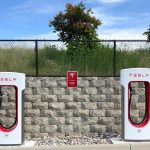During his recent appearance on the Office Hours: Business Edition podcast, Ford CEO Jim Farley recounted how dismantling Tesla and Chinese electric vehicles led to substantial shifts in Ford’s electric vehicle (EV) approach. He described the experience as eye-opening, pushing him and his team to reevaluate established production and engineering assumptions. Farley’s candid remarks underscored the challenges Ford faces as the EV market becomes increasingly competitive, particularly from foreign manufacturers. Many industry analysts believe this admission signals a turning point for Ford’s strategic thinking in the electric automotive sector, as the automaker explores ways to stay relevant globally while maintaining domestic appeal.
Earlier news reports have documented Ford’s struggles to keep pace with Tesla’s rapid innovation and China’s lower-cost EV production. Ford’s initial launch of the Mustang Mach-E was met with enthusiasm, but subsequent reviews highlighted higher production costs and efficiency shortfalls versus leading competitors. Past statements from Ford’s leadership pointed to software integration issues and slower-than-expected EV rollouts. In contrast, Farley’s latest comments provide a more direct acknowledgment of these challenges and offer fresh details about the extent of the differences uncovered by the teardown process. These developments reflect broader industry trends in which traditional automakers reassess their strategies amid fast-paced technology shifts led by newer entrants.
What Did the Teardowns Reveal?
The teardown of a Tesla Model 3 and multiple Chinese-made electric vehicles offered Ford’s engineers detailed comparisons in wiring, weight, and production techniques. Jim Farley noted that the Mustang Mach-E included significantly more wiring—about 1.6 kilometers—than the Model 3, leading to increased costs and vehicle weight. Insights from this investigation revealed opportunities to streamline manufacturing, echoing the practices found in competitors’ models. As a result, Ford recognized the need for substantial changes in how it designs and engineers its EVs.
How Has Ford Responded to the Findings?
Following the findings, Ford established its Model e division in 2022, dedicated exclusively to developing electric vehicles that could compete more directly with technology-driven companies. Despite reporting a $5 billion loss for Model e in 2024, Farley remains committed to pushing forward. He explained,
“My ethos is, take on the hardest problems as fast as you can and sometimes do it in public because you’ll solve them quicker that way.”
This strategic reorientation has included efforts to develop leaner vehicle designs and to restructure software development processes, taking inspiration from Tesla’s rapid production cycles.
How Does Ford View Its Position in the Global EV Market?
Ford’s leadership now identifies Chinese electric vehicle manufacturers, like BYD, as significant competitors not only in China but also internationally. Farley described the competitive threat as “existential,” emphasizing that Chinese vehicles are “far superior” in certain aspects. He also acknowledged the changing market dynamics in the US, noting a more gradual EV adoption curve. Farley commented,
“We can’t walk away from EVs. Not just for the US, but if we want to be a global company, I’m not going to just cede that to the Chinese.”
This viewpoint has informed Ford’s ongoing plans to introduce a $30,000 midsize electric truck targeting 2027, in response to growing demands for affordability and practicality.
Ford’s renewed focus and transparency mark a departure from typical legacy automaker strategies that often downplay competitors’ advances. By publicly acknowledging specific areas where Ford lags behind, Farley signals a willingness to make difficult changes in pursuit of greater efficiency. The development of Model e, driven by lessons learned from Tesla and Chinese brands, reflects how legacy companies are increasingly adopting processes typical of newer industry players. Car buyers and industry observers should expect further product and strategy adjustments from Ford as it responds to the rapidly evolving electric vehicle landscape. For consumers, these changes may result in more accessible pricing and designs, shaped by intense global competition and ongoing cost considerations.









